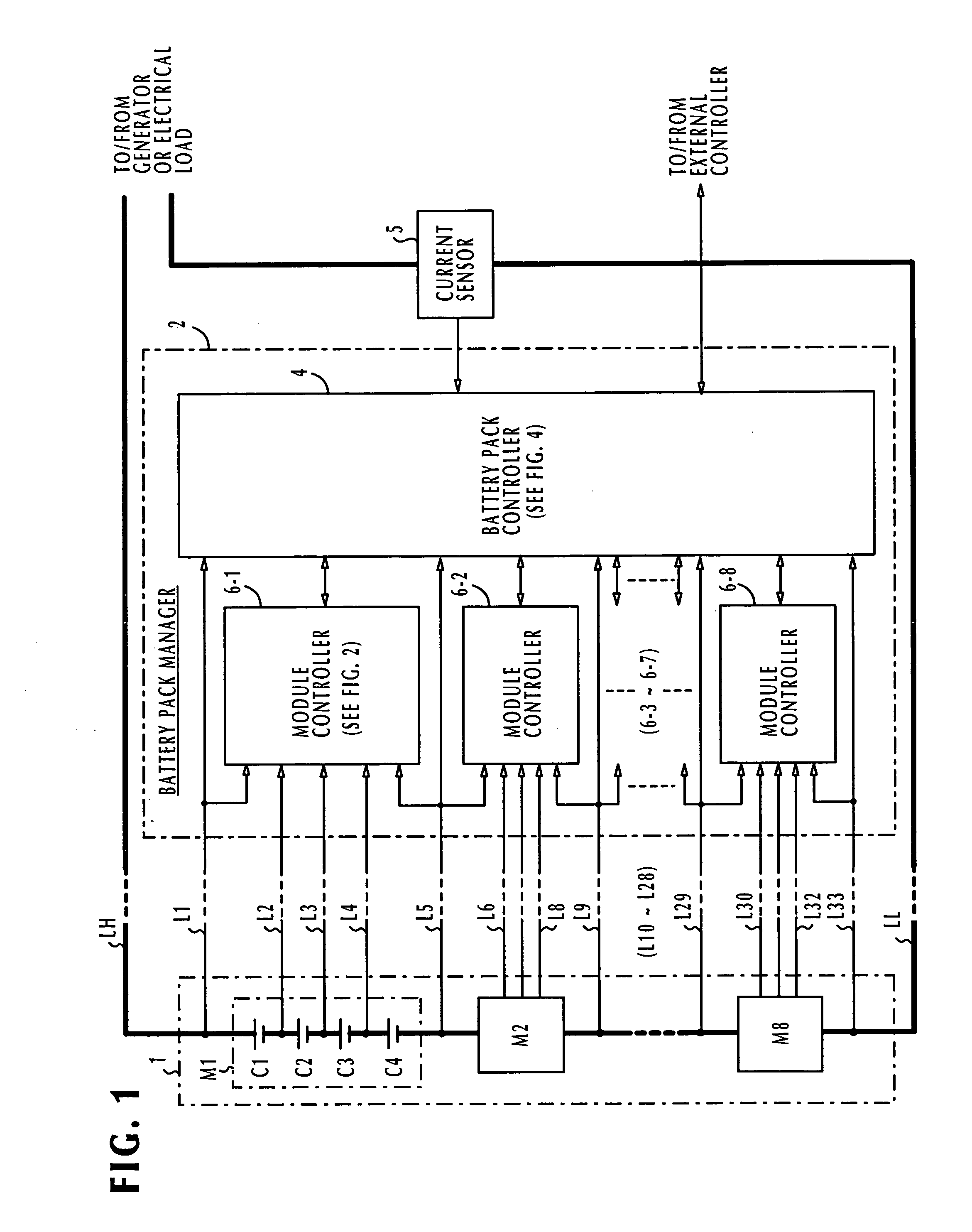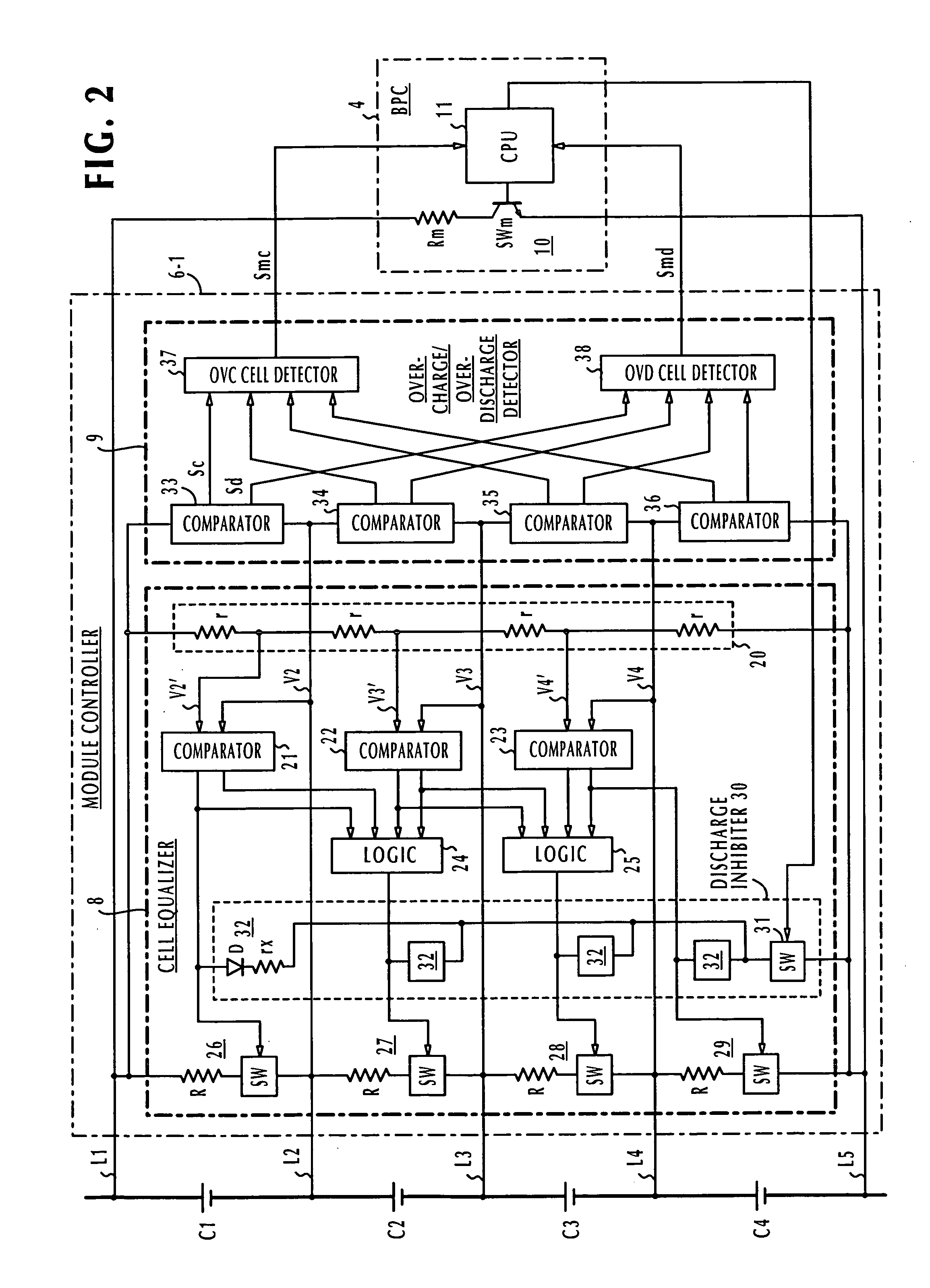Battery pack manager
a battery pack manager and controller technology, applied in battery overheat protection, safety/protection circuits, instruments, etc., can solve the problems of inability to precisely detect the charge/discharge state of each unit cell, the voltage of each unit cell of the module is significantly different, and the voltage of each unit cell is significantly different. achieve the effect of increasing power dissipation and without introducing complexity
- Summary
- Abstract
- Description
- Claims
- Application Information
AI Technical Summary
Benefits of technology
Problems solved by technology
Method used
Image
Examples
Embodiment Construction
[0032] Battery Pack 1
[0033] Referring to FIG. 1, a battery pack 1 and a battery pack manager 2 are illustrated. All unit cells of the battery pack 1 are lithium secondary cells whose voltages vary significantly from one cell to another. Because of the difficulty to individually control the cell voltages, the unit cells are segmented into multiple modules M1˜M8. For the purpose of disclosure, each battery pack module is made up of four unit cells C1 through C4. All unit cells of the battery pack 1 are connected in series between a high-voltage power line LH and a low-voltage power line LL and these power lines are connected to a generator or an electrical load such as regenerative driving motor, not shown.
[0034] Battery Pack Manager 2
[0035] Battery pack manager 2 comprises a battery pack controller 4, a current sensor 5, and a plurality of module controllers 6-1 through 6-8 of identical configuration, respectively associated with the modules M1 through M8 to individually control the...
PUM
 Login to View More
Login to View More Abstract
Description
Claims
Application Information
 Login to View More
Login to View More - R&D
- Intellectual Property
- Life Sciences
- Materials
- Tech Scout
- Unparalleled Data Quality
- Higher Quality Content
- 60% Fewer Hallucinations
Browse by: Latest US Patents, China's latest patents, Technical Efficacy Thesaurus, Application Domain, Technology Topic, Popular Technical Reports.
© 2025 PatSnap. All rights reserved.Legal|Privacy policy|Modern Slavery Act Transparency Statement|Sitemap|About US| Contact US: help@patsnap.com



